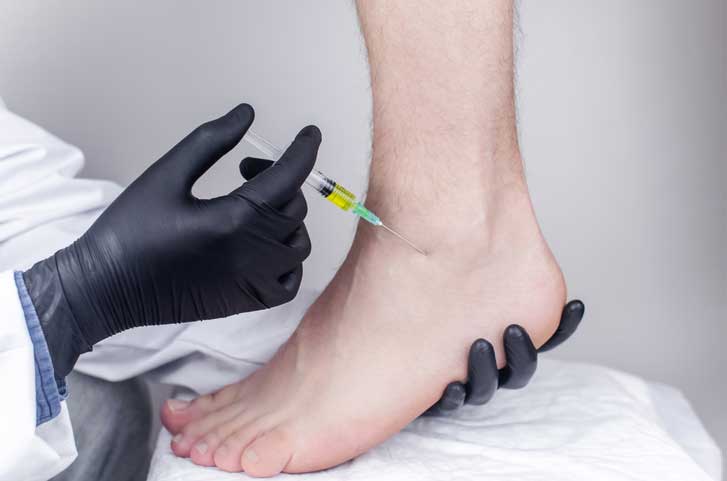An Achilles tendon tear is common with but not restricted to athletes. It’s an injury that can happen to anyone while going about their everyday life. The Achilles tendon is the largest tendon in the body. It extends from the bones in the heel to the calf muscles. It allows us to point our toes toward the floor and raise them up on our tiptoes.
As large as this tendon is, it can get injured and affect the overall foot movement in different degrees. The injuries also range from mild to total stiffness in parts of the limb involved. Also, the Achilles tendon may be partly or completely torn.

Read on to understand the effects that this Achilles tear can have on your everyday activities.
Main types of Achilles tears
- Non-insertional Achilles tendinitis
In non-insertional Achilles tendinitis, the fibers in the middle of the tendon break down, swell, and become thick.
- Insertional Achilles tendinitis
Insertional Achilles tendonitis usually affects the lower part of the heel, where the tendon insert goes into the heel bone. It can also lead to bone spurs.
Causes of Achilles tears
Achilles tendon injuries are common in athletes, but can also happen in people who do things that require them to quickly speed up, slow down, or pivot. Those activities include running, racing, gymnastics, soccer, volleyball, baseball, tennis, football, basketball, and dance.
These injuries typically happen when swift movements occur as you push off and lift the foot instead of when you land. As an example, a sprinter may get one at the start of a race when there’s a surge off the starting block. What happens is that the abrupt action may be too much for the tendon to handle.
Also, men over 30 are particularly prone to Achilles tendon tears. Achilles tears may occur when the Achilles tendon is stressed with high-impact activities. They are also referred to as repetitive stress injuries.
When an Achilles tendon tear happens, call (844) GET-STEM for stem cell treatment.
Effects of Achilles tears
People with ruptures of the Achilles tendon may find it possible to still walk without so much pain. In fact, some may still be able to actively move the ankle up and down or even manage to stand on tiptoes, either both toes at the same time together or on the injured limb alone.
However, some patients may have bruising and swelling in the area too, and this could make movement quite uncomfortable.
How you typically know that you have an Achilles tear is when you hear a snap or pop noise in the area. However, you will still require expert consultation to truly diagnose it.
People with Achilles tears may also have trouble pointing and pushing off their toes when they take a step.

Treatment of Achilles tears
People usually mistake an Achilles tendon injury for a sprained ankle. However, to avoid a misdiagnosis, you should visit a doctor who will give you a physical exam. The doctor may require you to walk or run so he can look for problems that might have led to your injury.
Painkillers, heel lifts, icing, and compression are some of the treatment options for mild Achilles tears. However, irrespective of the treatment option used, it’ll still require a significant amount of time to heal.
Stem cell treatment typically reduces the recovery time and can restore motion and eliminate pain in lesser time. The bone marrow is removed from the patient, processed in a centrifuge to concentrate the stem cells, and then injected into the injured Achilles tendon. Afterward, rest and minimal use are prescribed for about eight weeks after the surgery.
Do you need stem cell therapy in Phoenix, AZ for your Achilles tear? Reach out to us today to book your spot

Dr. David Greene
MD, PhD, MBA
Dr. David Greene, MD, PhD, MBA, is a pioneering leader in regenerative medicine and healthcare marketing. As a residency and fellowship-trained orthopedic surgeon, Dr. Greene transitioned from clinical practice to become the founder and CEO of R3 Stem Cell and US Lead Network, where he has revolutionized patient care and medical practice growth through innovative therapies and digital marketing strategies. He has authored two influential books on healthcare internet marketing, ranks among the top expert authors globally, and has been featured on the cover of Corporate Vision magazine for his impact on global regenerative therapies. Beyond his professional achievements, Dr. Greene is passionate about education, compassion, and continuous innovation.











Sorry, the comment form is closed at this time.